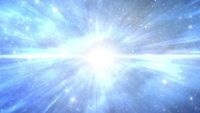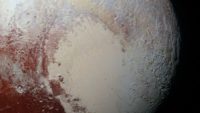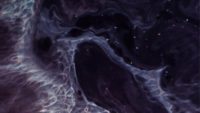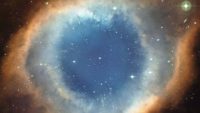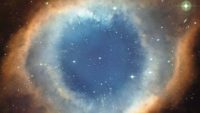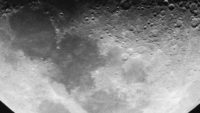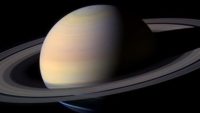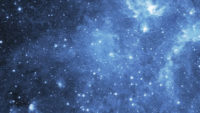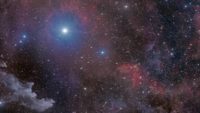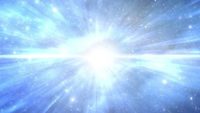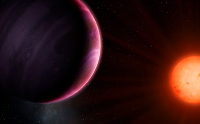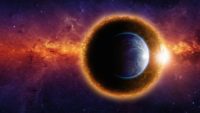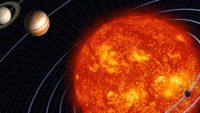A team of astronomers recently concluded that a nearby spheroidal galaxy, designated as NGC1052-DF2, contains very little, if any, dark matter.1,2 Since Big Bang scientists use dark matter to explain how galaxies formed, this poses a potential problem for naturalistic views. The galaxy in question, estimated to be about 65 million light-years away, has roughly the same volume as our own Milky Way galaxy, but it&r… More… …read more Source: icr.org
Or is it concluded from the assumption of a big bang? …read more Source: creation.com
Can causes operate at the same time as their effects? …read more Source: creation.com
By Ken Ham “Our universe may end the same way it was created: with a big, sudden bang.” This is the opening line of a recent article on Business Insider. This article highlighted research from a group of Harvard physicists who claim the universe might end with an “instantaneous bang” in 10139 years (that’s 10 million trillion trillion . . . with a lot more trillions of years after it). Here’s their thinking: they believe the Higgs boson particle, a particle in quantum physics that gives other particles their mass, could become destabilized. This could lead to an explosion of [More]
The exoplanet Kepler-78b stuns astronomers, defies evolutionary formation theories …read more Source:
By Dr. Danny R. Faulkner When a probe flew by Pluto, it made a shocking discovery: the surface is young. Astronomers are still scrambling to explain why. …read more Source: AIG Daily
By Dr. Danny R. Faulkner The discovery of a galaxy with little or no dark matter disproves MOND. Therefore, the reality of dark matter is more certain. …read more Source: AIG Daily
A recent news article1 reported that certain types of stars2 in our Milky Way Galaxy have more lithium (Li) in their stellar atmosphere than the current models predict. Before 1982, it was generally believed that Li abundances in “unevolved” low-mass stars3 with low metallicity4 were constant as predicted by Big Bang nucleosynthesis models. However, in that year a closer analy… More… …read more Source: icr.org
Does the moon give us enough clues to estimate how many asteroids impacted the earth. …read more Source: creation.com
By Dr. Danny R. Faulkner The hypothesis that extragalactic redshifts are cosmological is strongly supported. I encourage fellow recent creationists to abandon their doubts that extragalactic redshifts are cosmological and better focus their work on explaining extragalactic redshifts in terms of a biblical cosmology. …read more Source: AIG Daily
Astronomers recently detected an enormous but short-lived increase in radiation from the nearby star Proxima Centauri.1,2 This radiation burst, known as a flare, caused the star to become a thousand times brighter for ten seconds. Our sun also has flares, but those flares are much smaller. At the time of its peak brightness, the Proxima Centauri flare was ten times brighter (in the measured wavelengths) than even the largest flares emi… More… …read more Source: icr.org
By Dr. Danny R. Faulkner Many recent creationists appear to oppose the Hubble relation, the expansion of the universe, and/or cosmological redshifts of quasars. The rejection of these topics by many creationists appears to be motivated by fear of possible evolutionary implications. …read more Source: AIG Daily
By Ken Ham It seems that every other month there’s another article about a new moon-formation hypothesis. This month it’s that “the moon may have formed in a vaporised, doughnut-shaped Earth.” This new model suggests that 4.5 billion years ago something collided with earth, causing it to mushroom out into a “seething, spinning cloud of vaporised rock that resembled a squished jelly doughnut.” Then, within earth’s “puffy edges,” our moon formed. This new model comes from computer simulations of the supposed early earth. These simulations showed a post-collision, shape-shifting early earth, which was a “previously unrecognised planetary structure.” The researcher [More]
Big Bang scientists are wrestling with “serious” contradictory estimates for the size of the Hubble constant—one of the most important numbers in cosmology.1,2 The Hubble constant, indicated by the symbol H0, is important because it’s thought to give the current expansion rate of the universe. It indicates the speed at which galaxies are apparently receding from one another. This apparent … More… …read more Source: icr.org
By Jeanette Littleton The $3.26 billion Cassini-Huygens mission, launched in 1997, was a resounding success. It vastly improved our understanding of Saturn. The space probe Cassini’s most amazing discovery didn’t make the headlines: the clear testimony to Saturn’s young age and the fact that it had a Creator. …read more Source: AIG Daily
By Dr. Stefan Parfitt A novel satellite is scheduled to investigate the feasibility of using “solar wind” as a source of propulsion for spacecraft and satellites by using solar sails. If successful, solar sails may eventually prove suitable for propelling long, unmanned space exploration and possibly manned, interplanetary operations. …read more Source: AIG Daily
By Troy Lacey In a recent paper published in the Astrophysical Journal Letters, a team of Chinese and Japanese astronomers reported on high-Lithium concentrations in 12 newly discovered low-mass, metal-poor, main-sequence and Red giant stars in the Milky Way halo. …read more Source: AIG Daily
Does astronomy disprove the Bible like many scoffers claim? Actually, history confirms that the Bible is always right when it touches on any subject—including astronomy. Learn how the Bible got astronomy right when it addresses the roundness of Earth, its suspension in space, the expansion of the heavens, and more! Listen: Astronomy: The Bible Got It Right! | The Institute for Creation Research
Evolutionists continue to wrestle with just how our nearest lunar neighbour was formed … and their explanations are unsatisfactory. …read more Source: creation.com
Data obtained by an instrument aboard the Cassini space probe have convinced planetary scientists that Saturn’s rings can be no more than a few hundred million years old.1 These new data confirmed some researchers’ previous suspicions. For instance, a previous ICR news article described how numerous planetary features within our solar system—including Saturn’s brilliant rings—look “young,” even to secular scientists.2 One of these features is the cleanness of Saturn’s rings. Secular scientists claim that the solar system is around 4.5 billion years old, so if Saturn’s rings were indeed that old, then they should have experienced billions of years’ [More]
Space probe Rosetta finds oxygen gas found in coma of comet 67P/Churyumov–;Gerasimenko …read more Source: creation.com
By Troy Lacey Take a look at some of these astronomy/astrophysics-related news stories from the cosmic-evolutionary view and see how some have been paradigm changers. …read more Source: AIG Daily
We are all space travelers-and Spacecraft Earth helps us understand our place in God’s universe. …read more Source: creation.com
By Dr. Danny R. Faulkner One of the major proponents of using the big bang to prove God’s existence is the Christian philosopher William Lane Craig. …read more Source: AIG Daily
Secular astronomers recently described three bizarre discoveries that challenge mainstream ideas of an evolving universe: a planet that’s too big for its star, a distant “young” galaxy that shouldn’t look old, and an explosion that should have happened a long, long time ago. More… …read more Source: icr.org
By Dr. Danny R. Faulkner Promoters of Nibiru‘s existence often call it “Planet X,” and use articles and astronomers’ comments about Planet X to support their claims about Nibiru. …read more Source: AIG Daily
By Dr. Danny R. Faulkner While we creationists may not have explicitly predicted such a thing, the discovery of 1I ‘Oumuamua is consistent with what we know about creation. …read more Source: AIG Daily






















